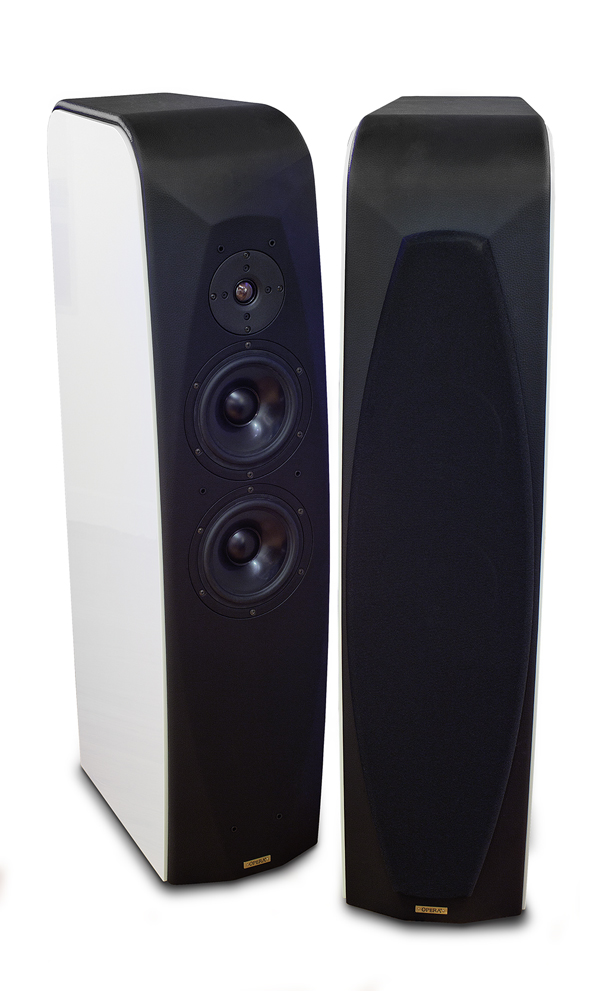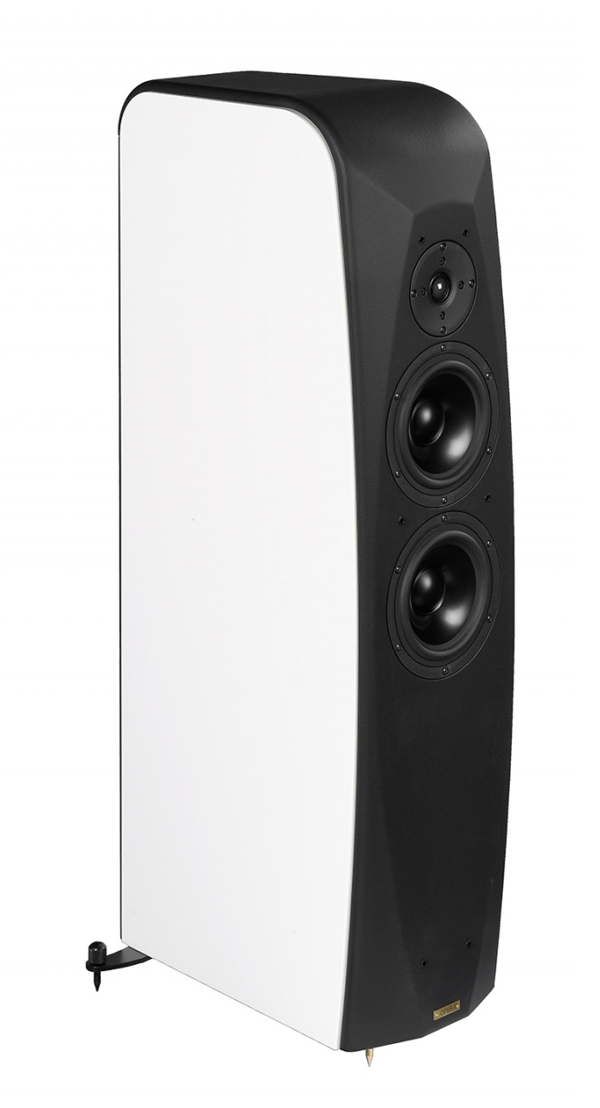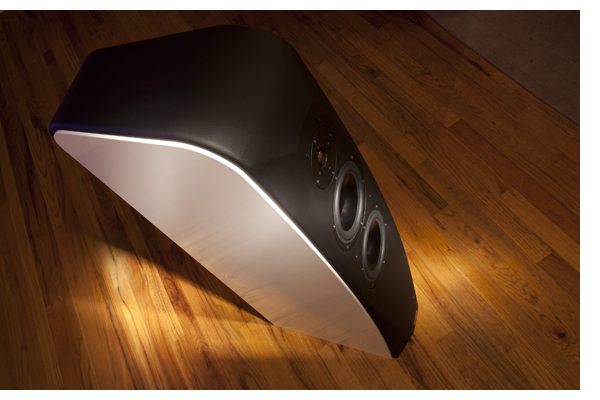 For those of you unfamiliar with Opera Loudspeakers, let us enlighten you. Opera is the “other guy” making high-quality speakers in Italy. The Seconda is the middle model in the company’s Classica line of reasonably priced speakers. Compared to $4,995 for Opera’s Callas speakers and $9,995 for its Grand Callas—and considering the quality of the Seconda speakers—$3,995 is indeed a reasonable price to pay for this level of quality.
For those of you unfamiliar with Opera Loudspeakers, let us enlighten you. Opera is the “other guy” making high-quality speakers in Italy. The Seconda is the middle model in the company’s Classica line of reasonably priced speakers. Compared to $4,995 for Opera’s Callas speakers and $9,995 for its Grand Callas—and considering the quality of the Seconda speakers—$3,995 is indeed a reasonable price to pay for this level of quality.
The Classica line features a leatherette covering rather than the real thing to help shave a few bucks off the price point. Opera, like a number of luxury carmakers, is able to pull this off so tastefully that the fit and finish will fool all but the fussiest connoisseur. Our review pair of Secondas arrived finished in a striking high-gloss white lacquer, which is becoming increasingly popular in Europe and making a comeback here in the U.S. The sides are made from real wood, with the front and rear baffles, MDF.
These speakers are no lightweights: They tip the scales at an even 100 pounds apiece. They offer nicely finished binding posts that allow for easy bi-wiring, and the company provides spikes for the bottom front of the speaker, as well as a spiked outrigger arrangement at the bottom rear to add stability and make it easier to set the rake angle.
An Unconventional Approach
Two 7-inch aluminum cone woofers and a 1-inch silk dome tweeter sourced from Scan-Speak lurk behind the black grilles, which are easily removed. If you have no prying paws around, I suggest enjoying the beauty of the Secondas sans grille. While most competing products opt for a ported design, the Seconda has a sealed enclosure, which makes for a gentler impedance curve—a definite plus when used in conjunction with a tube amplifier. (Opera’s sister company, Unison Research, just so happens to excel at producing tube amplifiers.)
The crossover point of the Seconda is a commendably low 2,200 Hz, with a second-order slope. It also maintains good off-axis performance and high overall levels of coherence. Eschewing the ubiquitous curved side panel for a baffle that is curved and angled, the Seconda minimizes unwanted cabinet reflections, which helps lessen interference with the front baffle.
Slightly tight and bright out of the box, the Seconda reveals its charms after about 200 hours—and the effort is well worth the wait. I would suggest letting them play every day when you go to work and, after a week, you will be rewarded with a pleasant surprise. Once broken in, the Seconda exhibits a clear, open and lively character in the midrange, with a high-frequency range that is extended and smooth at the same time. Those familiar with traditional Italian speakers might expect a kind of laid-back and mellow presentation, but this is not the case with the Seconda.
The sealed-box design yields a very even, gradual and protracted bass response, free from the usual impedance hiccup that can plague the tuning frequency of a standard vented enclosure. This proves to be a wonderful counterbalance to the high-frequency extension of the tweeter. The dual aluminum midrange drivers offer quick responses, which helps eliminate any inclination of a slow or bloated low end.
Everything about this speaker’s design bodes well for the music lover. It possesses a sensitivity of 89 dB and a 4-ohm nominal impedance, which means you only really need 35 to 50 watts of juice to adequately drive each channel. Pairing the Secondas with the Unison Research S6 integrated amp borrowed from our publisher for this review made for an excellent combination that was the definition of musicality. I equally enjoyed the speakers when driving them with 100 watts per channel of solid-state power from my Class A Coda amplifier.
Dynamic classic-rock titles like Led Zeppelin II, Taste’s recently remastered On the Boards and Jefferson Airplane’s Bless Its Pointed Little Head all favored the big solid-state sound, especially at high volumes. The speaker’s sealed cabinets yield a visceral presentation: Drums come alive and the electric bass has a convincing wallop, with no loss of texture.
But the Seconda isn’t only about getting down with classic rock. Teeing up some great CD recordings from the recent past tells a lot about this speaker’s ability to accurately portray large classical ensembles and intimate jazz groups in realistic scale.
During a listening session of drummer Peter Erskine’s jazz trio on Live At Rocco, the Seconda captures the wide-open ambiance of the venue. You can easily discern all of the audience noises, such as clinking glasses and soft whispers. Soft brush strokes on cymbals have the appropriate shimmer and decay, while the upright bass’s sinewy plucked strings resonate with strength. Another great live recording, Tonic from Medeski, Martin & Wood, treats the listener to that same wide-open room sound. On the track “Buster Rides Again” Billy Martin hammers away vigorously with his funky timekeeping, which the Secondas put right in the middle of the soundstage.
As for the bass prowess of these speakers, Alberto Iglesias’ soundtrack to the film Todo Sobre Mi Madre—a beautiful score, full of deep-bass lines—accentuates the Secondas’ ability to handle the lowest notes with ease. The score’s short track “Le Faltaba la Mitad,” a mix of massed strings and haunting bass, feels as if it migrated from a Dead Can Dance album. Here, the Secondas easily keep the pace solid, even at high levels, without distortion or soundtrack collapse. At the same time, the sparse percussion gently dances throughout the soundfield unaffected—a very impressive feat for speakers at this price point.
Reference Recordings’ Mephisto & Co. showcases the Minnesota Orchestra in full song. On this recording, the classic Mussorgsky piece “Night on Bald Mountain” perfectly illustrates the ability of these speakers to go instantly from loud to soft. Playing perhaps louder than is prudent, with my Coda amp delivering the goods, the piece builds to crescendo, all the while maintaining the orchestra’s three-dimensional space. The Seconda portrays the big stuff faithfully and then backs off beautifully to capture the softer passages featuring flute and piccolo. Reference Recordings’ Symphonic Dances by Rachmaninoff reveals the speaker’s ability to render size and scale, at the same time casting a spotlight on how well the dual 7-inch woofers are able to start and stop without any overhang or fatigue.
Just as I was ready to wind up the review and begin packing the Secondas to send to their next appointment, Bob Dylan’s Greatest Hits from Audio Fidelity arrived. Again, I was reminded of the wonderful midrange that these speakers offer. Dylan’s voice is eerily realistic and squarely in the room on “Blowin’ in The Wind,” on which I found the decay of both his voice and harp utterly captivating. The speakers also handle male and female vocals with equal ease, so those partaking more of the latter will be equally smitten. A quick spin of Shelby Lynne’s Just A Little Lovin’ (courtesy of the Acoustic Sounds’ remaster) is incredibly vibrant and realistic.
I thoroughly enjoyed the time spent with the Opera Secondas. While these may not be the first name on the tip of your tongue when searching for your next pair of speakers, they are worth seeking out and even more worthy of an extended audition. They bring a number of design elements together: a large sealed enclosure, quality drivers, elegant cosmetics and outstanding in-room performance. And, at a relatively affordable $3,995 a pair, they offer incredible value, ranking highly on the wife-acceptance factor and also delivering great performance for the price. If you’re looking for something other than the usual fare, and in the mood for something different, these Italian wonders are certainly worth a listen.
Opera Seconda Loudspeakers
MSRP: $3,995
www.operaloudspeakers.com
Available in the U.S. through Colleen Cardas Imports: www.colleencardasimports.com
















